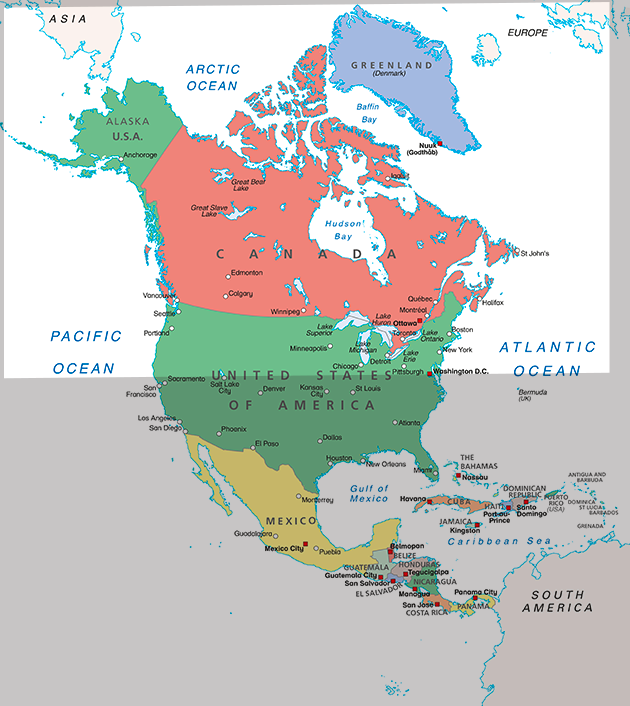
Alaska, Canada & Greenland
Canada and Alaska occupy the northern half of North America. Canada, formerly a dominion of the UK, occupies much of the north of the continent. The arctic northern region consists of a vast group of islands, the largest of which is Baffin Island. Hudson Bay forms a huge inlet in the east, while the west is dominated by major mountain ranges, particularly the Rocky Mountains. Much of the rest is lowlands or plateau, dotted by thousands of lakes. Part of the boundary with the USA passes through the Great Lakes, west of which runs along the 49th parallel.
Canada is surrounded on three sides by oceans, the Arctic Ocean to the North, the Pacific to the west and the Atlantic to the east. It has the longest coastline of any country in the world. The climate varies greatly from location to location. The interior provinces experience bitterly cold, dry winters, with temperatures frequently dropping to -40 °C, and extremely hot summers. Coastal areas enjoy a more temperate climate.
Canada is one of the world’s wealthiest countries. It has a high per capita income and is one of the world's top ten trading nations.
Alaska is the largest US state lies partly within the Arctic Circle, and faces the Russia across the narrow Bering Strait. It is separated from the rest of the USA by 800 kilometres of British Columbia’s coast. It has vast energy resources and is home to the highest yielding oilfield in North America.
The mostly ice-covered island of Greenland – a dependency of Denmark – lies off the northeast coast of Canada.